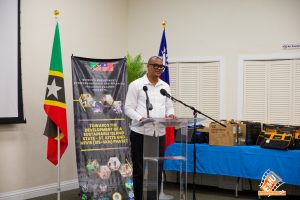National Trust President Reveals Financial Discrepancies in Troubled $1.8 Million Museum Restoration Project
The St. Christopher National Trust, a body responsible for preserving the nation’s heritage, finds itself embroiled in a controversy surrounding the restoration of a historic museum. What began as a promising $1.8 million project, intended to revitalize a significant landmark, has devolved into a saga of delays, financial discrepancies, and public outrage, leaving the nation questioning the government’s transparency and accountability.
The project’s timeline reveals a series of missteps and unexplained delays. Initially slated for completion within nine months, the restoration has stretched into a two-year ordeal, punctuated by the abrupt departure of the contracted Trinidadian firm, Parbonnier. The firm, initially lauded for its expertise in industrial restoration, commenced work in September 2023, only to abandon the site in early 2024 due to non-payment by the St. Kitts and Nevis government. This critical lapse in funding highlights a significant breakdown in financial management, raising concerns about the allocation and oversight of the allocated $1.8 million.
Although Parbonnier briefly returned to the site in January 2024, their efforts were short-lived, hampered again by the lack of promised funds. The outstanding payments were finally settled in July 2024, with additional costs addressed in February 2025, raising further questions about the government’s financial planning and execution. This protracted payment process not only stalled the project but also tarnished the nation’s reputation, potentially deterring future collaborations with international firms.
Kevin Taylor, President of the St. Christopher National Trust, has publicly addressed the situation, acknowledging the project’s troubled trajectory and the government’s role in the delays. While he’s attempted to reassure the public that Parbonnier is preparing to resume work in April 2025, with anticipated completion by year-end, the prolonged hiatus has introduced new uncertainties. The extended period of inactivity necessitates a reassessment of the building’s structural integrity, potentially leading to escalated costs, compromised restoration quality, and even irreversible damage to the historic structure.
The project’s failure to adhere to its initial timeline and budget has sparked widespread public distrust. The lack of transparency surrounding the allocation and disbursement of funds has fueled suspicion of mismanagement and potential misappropriation. The prolonged delays, coupled with the absence of a tangible outcome, have transformed what was meant to be a symbol of national pride into a source of national embarrassment. Citizens are demanding answers and accountability, questioning where the allocated funds were directed and who bears responsibility for the project’s mismanagement.
The stalled museum restoration project serves as a stark reminder of the importance of transparency and accountability in government-funded initiatives. The project’s mismanagement has not only eroded public trust but has also jeopardized a significant piece of national heritage. The situation underscores the need for rigorous oversight of public funds, clear communication regarding project progress, and a commitment to holding those responsible for mismanagement accountable. The future of the museum, once a beacon of national pride, now hangs in the balance, its fate intertwined with the government’s ability to address the concerns raised by this deeply troubling situation.
Share this content:








Post Comment